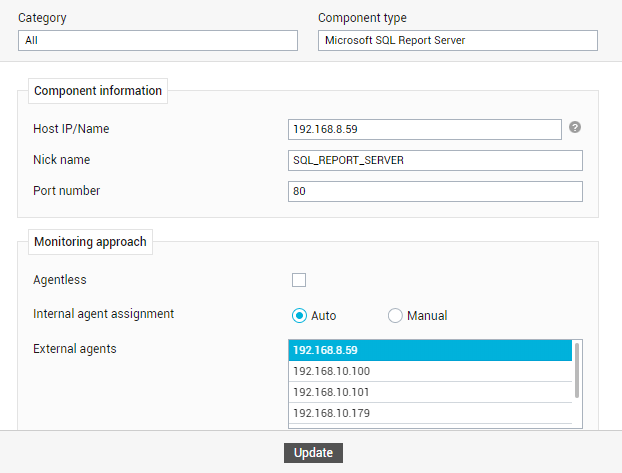Managing a Microsoft SQL Report Server
To achieve this, do the following:
- Login to the eG admin interface.
- Follow the Infrastructure -> Components -> Add/Modify menu sequence.
- In the page that appears next, select Microsoft SQL Report Server as the Component type and click the Add New Component button.
-
Figure 1 then appears.

Figure 1 : Adding a Microsoft SQL Report server for monitoring
-
In Figure 1, specify the following:
- Host IP/Name: The report server can be installed with the Microsoft SQL server – i.e., on the same host as that of the Microsoft SQL server - or on a different host. If the report server is co-located with the Microsoft SQL server, then make sure that you manage the Microsoft SQL Report Server component in eG Enterprise using the IP/host name of that Microsoft SQL server. On the other hand, if the report server is installed on a different host, then make sure you manage the Microsoft SQL Report Server component in eG using the IP/host name of that host.
- Nick name: Assign a unique nick name to the target report server.
- Port number: Specify the port at which the target report server listens. This is port 80 by default. You can override this default value, if there is a change in the report port. Before making the change, figure out the exact port at which SSRS listens. For this, follow the procedure detailed in Determining the Port Number of Microsoft SQL Report Server.
- Agentless: Make sure that this check box is deselected, as agent- based monitoring is recommended.
- Internal Agent Assignment: Set it to Auto.
- External Agents: Assign one/more external agents to the report server being added.
- Next, click the Add button in Figure 1 to save the changes.
- Finally, sign out of the eG admin interface.